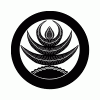-
Posts
458 -
Joined
-
Last visited
-
Days Won
2

Andi B. replied to stephan_hiller's topic in Auctions and Online Sales or Sellers

Andi B. replied to Andi B.'s topic in General Nihonto Related Discussion

Andi B. replied to uwe's topic in Sword Shows, Events, Community News and Legislation Issues

Andi B. replied to uwe's topic in Sword Shows, Events, Community News and Legislation Issues

Andi B. replied to Marius's topic in Auctions and Online Sales or Sellers

Andi B. replied to Robert C. Walker's topic in General Nihonto Related Discussion

